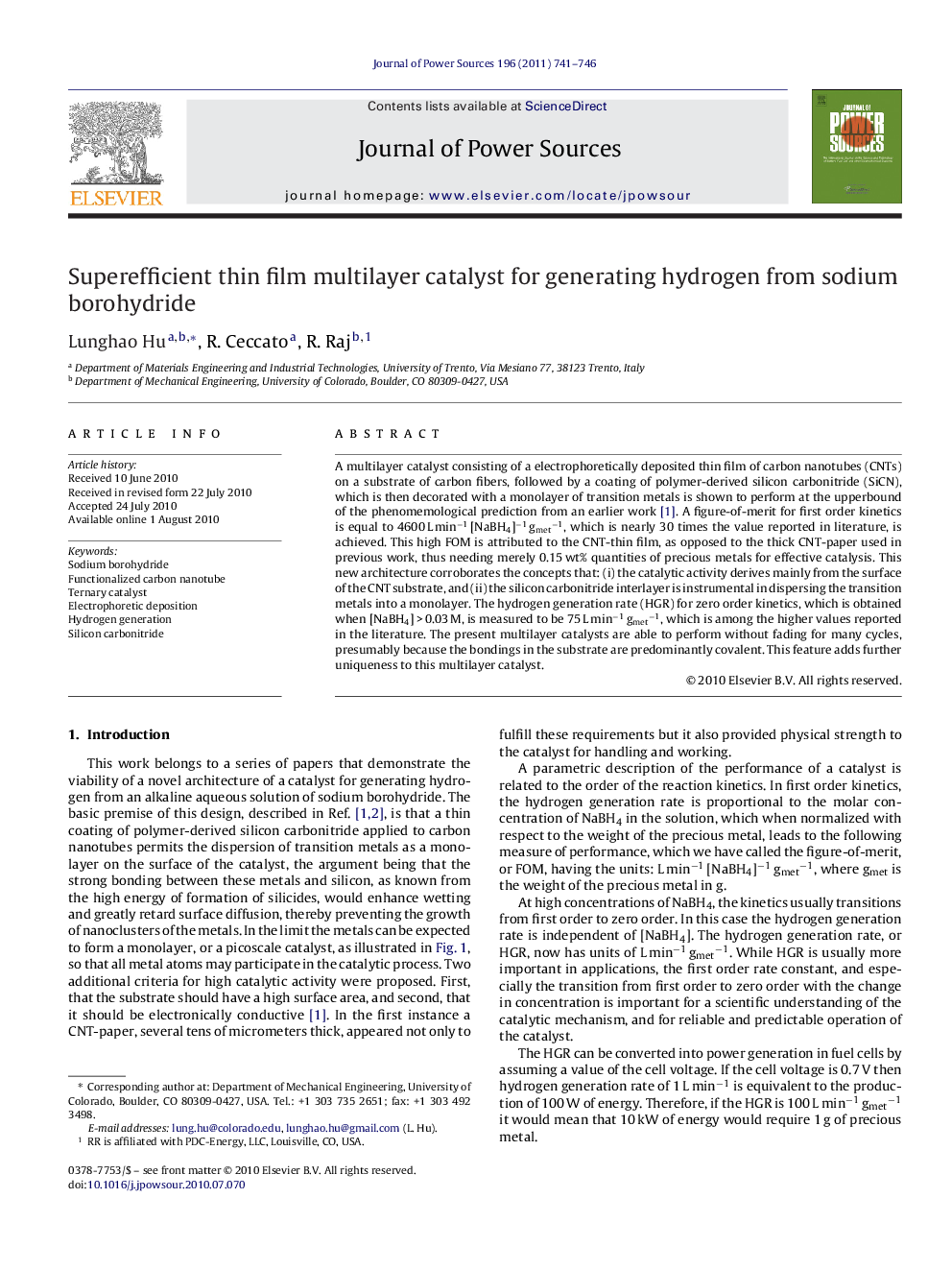| Article ID | Journal | Published Year | Pages | File Type |
|---|---|---|---|---|
| 1284825 | Journal of Power Sources | 2011 | 6 Pages |
A multilayer catalyst consisting of a electrophoretically deposited thin film of carbon nanotubes (CNTs) on a substrate of carbon fibers, followed by a coating of polymer-derived silicon carbonitride (SiCN), which is then decorated with a monolayer of transition metals is shown to perform at the upperbound of the phenomemological prediction from an earlier work [1]. A figure-of-merit for first order kinetics is equal to 4600 L min−1 [NaBH4]−1 gmet−1, which is nearly 30 times the value reported in literature, is achieved. This high FOM is attributed to the CNT-thin film, as opposed to the thick CNT-paper used in previous work, thus needing merely 0.15 wt% quantities of precious metals for effective catalysis. This new architecture corroborates the concepts that: (i) the catalytic activity derives mainly from the surface of the CNT substrate, and (ii) the silicon carbonitride interlayer is instrumental in dispersing the transition metals into a monolayer. The hydrogen generation rate (HGR) for zero order kinetics, which is obtained when [NaBH4] > 0.03 M, is measured to be 75 L min−1 gmet−1, which is among the higher values reported in the literature. The present multilayer catalysts are able to perform without fading for many cycles, presumably because the bondings in the substrate are predominantly covalent. This feature adds further uniqueness to this multilayer catalyst.
